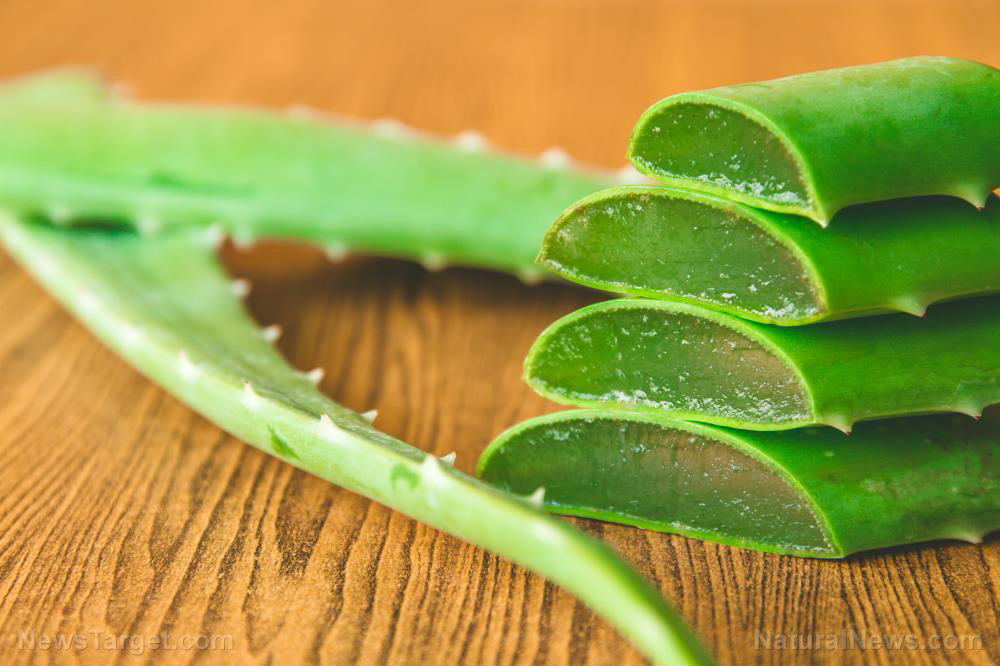Components of aloe vera extracts show antiviral activity against influenza A
10/01/2020 // Evangelyn Rodriguez // Views
Tags: aloe vera, alternative medicine, antiviral, goodhealth, goodmedicine, goodscience, herbal medicine, Herbs, infections, influenza, influenza A virus, natural cures, natural medicine, phytonutrients, plant medicine, remedies, research

- Previous studies have found that the ethanolic extract of Aloe vera (AVE) has significant anti-influenza activity, but the mechanisms underlying this activity and the constituents responsible for it have not yet been elucidated.
- In an earlier study, the researchers reported that AVE treatment significantly reduced the replication of green fluorescent protein-labeled influenza A virus in Madin-Darby canine kidney (MDCK) cells.
- They also noted that post-treatment with AVE inhibited expression of viral matrix protein 1 (M1), matrix protein 2 (M2) and hemagglutinin (HA).
- In the present study, the researchers found that AVE inhibited autophagy induced by influenza A in MDCK cells.
- They also identified quercetin, catechin hydrate and kaempferol as the active antiviral components of AVE.
- Post-treatment with the three compounds markedly inhibited M2 viral mRNA synthesis and M2 protein expression.
- Docking simulation suggested that the binding affinity of quercetin, catechin hydrate and kaempferol for the M2 protein may be higher than that of known M2 protein inhibitors.
Based on these findings, the researchers concluded that Aloe vera is an effective antiviral agent against H1N1 and H3N2 because it contains active compounds that can inhibit influenza virus-induced autophagy.
Journal Reference:
Choi JG, Lee H, Kim YS, Hwang YH, Oh YC, Lee B, Moon KM, Cho WK, Ma JY. ALOE VERA AND ITS COMPONENTS INHIBIT INFLUENZA A VIRUS-INDUCED AUTOPHAGY AND REPLICATION. The American Journal of Chinese Medicine. 2019;47(06):1307–1324. DOI: 10.1142/s0192415x19500678
Related Topics
aloe vera alternative medicine antiviral goodhealth goodmedicine goodscience herbal medicine Herbs infections influenza influenza A virus natural cures natural medicine phytonutrients plant medicine remedies researchLatest News
Related News
07/10/2023 / By Zoey Sky
07/05/2023 / By Ethan Huff
07/05/2023 / By Kevin Hughes
07/04/2023 / By Olivia Cook
07/04/2023 / By Zoey Sky
Take Action:
Support Natural News by linking to this article from your website.
Permalink to this article:
Copy
Embed article link:
Copy
Reprinting this article:
Non-commercial use is permitted with credit to NaturalNews.com (including a clickable link).
Please contact us for more information.
Please contact us for more information.






















